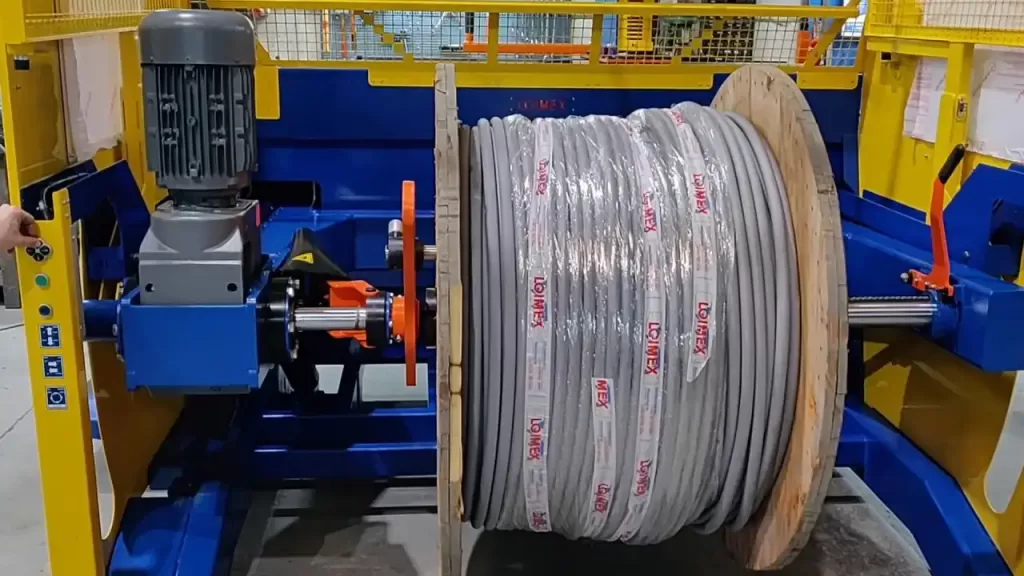Enhancing Wire Rod Handling: The Role of Automatic Compacting and Strapping Machines
Handling large, heavy wire rods efficiently and safely presents a significant challenge in metal processing and fabrication environments. Manual methods can be slow, labor-intensive, and pose ergonomic risks. Automatic wire rod compacting and strapping machines offer a robust solution, streamlining the packaging process and improving overall operational efficiency.

Understanding the Need for Automation in Wire Rod Packaging
Traditional manual bundling of wire rods often involves:
- Significant physical exertion, leading to potential worker fatigue and injury.
- Inconsistent bundle tightness and shape, impacting storage density and transport stability.
- Slower processing speeds, creating bottlenecks in production workflows.
- Higher risk of material damage during handling.
Automation addresses these issues by providing a controlled, repeatable, and efficient method for preparing wire rods for storage or shipment.
How Automatic Wire Rod Compacting and Strapping Machines Operate
These machines typically follow a synchronized sequence to process wire coils:
- Loading: Wire rod coils are fed onto an infeed conveyor system, often designed to handle the specific size and weight requirements of the application.
- Compacting: The coil moves into the compaction zone. A hydraulic system powers a press or ram that applies controlled pressure to the coil, reducing its overall volume and creating a denser, more stable bundle. Advanced systems allow for precise pressure adjustments to suit different wire types and diameters, preventing material damage.
- Strapping: Once compacted, the bundle is automatically strapped. Strapping heads apply plastic or steel straps at predetermined intervals and tensions, securing the coil firmly. The number of straps and their positions can usually be programmed based on the coil size and stability requirements.
- Unloading: The securely compacted and strapped coil is transferred via an outfeed conveyor, ready for the next stage of handling or storage.
Key Features and Technologies
Modern automatic wire rod compacting and strapping machines incorporate several key features:
- Robust Hydraulic Systems: Provide the necessary force for effective compaction while allowing fine control over applied pressure. Features like soft start/stop minimize jolts and ensure smooth operation.
- Durable Construction: Built with solid structures and heavy-duty components to withstand demanding industrial environments and ensure longevity.
- Integrated Conveyor Systems: Facilitate seamless loading and unloading, minimizing manual intervention and integrating smoothly into existing production lines.
- Advanced Safety Mechanisms: Multiple limit switches, emergency stops, and guarding are incorporated to protect operators and prevent machine damage. Systems often stop automatically if an issue is detected.
- Programmable Logic Controllers (PLCs): Allow for easy setup, adjustment of parameters (compaction pressure, strap tension, strap number/position), and diagnostics.
- Specialized Transmission Mechanisms: Ensure stable and reliable movement of heavy coils throughout the compacting and strapping process.
- Stability Control: Features designed to ensure smooth transitions during shifts in the center of gravity as the heavy coil is manipulated.
(Optional: Some configurations may include dedicated positions for manual strapping intervention if required for specific applications or backup scenarios.)
Core Benefits of Automated Compacting and Strapping
Implementing an automatic system yields significant advantages:
- Enhanced Throughput: These machines operate continuously at speeds significantly higher than manual methods, reducing cycle times and boosting overall productivity.
- Improved Bundle Integrity and Consistency: Automated compaction and strapping ensure uniformly dense and securely strapped bundles every time, optimizing space utilization in storage and transport and reducing the risk of loosening during transit.
- Increased Safety: By automating the heavy lifting, pressing, and strapping tasks, the risk of musculoskeletal injuries, pinch points, and accidents associated with manual handling is drastically reduced, leading to a safer work environment.
- Optimized Material Usage: Precise control over compaction pressure and strap tension minimizes the overuse of strapping materials, reducing waste and associated costs.
- Reduced Labor Costs: Automation frees up personnel previously assigned to manual bundling, allowing them to focus on higher-value tasks.
- Space Efficiency: Consistent, compact bundles allow for denser storage, maximizing the use of valuable warehouse or yard space.
- Reliability and Durability: Designed for industrial use, these machines offer reliable, long-term performance with appropriate maintenance, minimizing downtime.

wire winding and packing Operational Considerations
Before integrating an automatic wire rod compacting and strapping machine, facilities should consider:
- Coil Specifications: Ensure the machine's capacity (size, weight, diameter) matches the range of wire rods processed.
- Throughput Requirements: Select a machine speed that aligns with production needs.
- Integration: Plan how the machine will fit into the existing material flow and production line.
- Maintenance: Understand the routine maintenance requirements to ensure longevity and optimal performance.
- Operator Training: Ensure personnel are properly trained on safe operation and basic troubleshooting.
Video Demonstration
See an example of an automatic wire rod compacting and strapping machine in action:
(Video showing the operation of an automatic wire rod compactor and strapper)
Conclusion
Automatic wire rod compacting and strapping machines represent a significant advancement in material handling for the metals industry. By combining hydraulic power, precise control, and automated strapping, these systems deliver improvements in efficiency, safety, consistency, and cost-effectiveness, making them a valuable asset for any operation handling large volumes of wire rods. Evaluating their implementation can lead to substantial operational benefits and a safer working environment.
